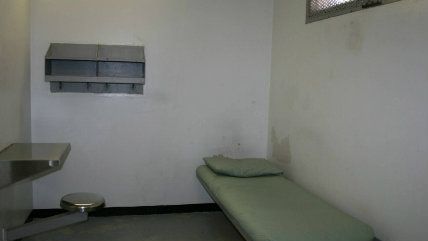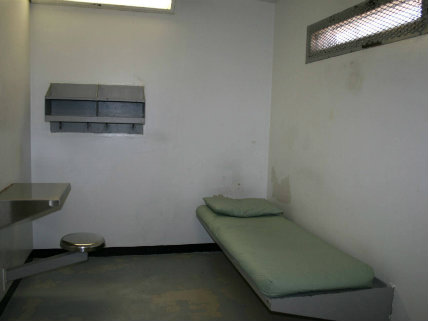The U.S. Put at Least 67,000 People in Solitary Confinement Last Year
About 3,000 of those were in solitary for six years or longer.


While the use of solitary confinement in the U.S. has been decreasing in recent years, there were at least 67,442 inmates in the U.S. locked in their cells for 22 or more hours a day in the fall of 2015, according to a report released Wednesday by the Association of State Correctional Administrators (ASCA) and Yale Law School.
The report gives a significant, albeit incomplete, snapshot of the use of solitary confinement in the U.S., which is an outlier among countries in its use of the widely condemned practice. The census includes federal and state inmates placed in any form of "restricted housing" for at least 22 hours a day for more than 15 consecutive days. It did not include local and county jails, federal immigration detention centers, and juvenile and military detention centers, meaning the number could be higher.
The survey found that "a national consensus has emerged focused on limiting the use of restricted housing, and many new initiatives, as detailed in the report, reflect efforts to make changes at both the state and federal levels." South Carolina, Utah, and Colorado have all reduced their use of solitary confinement.
"What we are seeing is that prison systems are motivated to reduce the use of isolation in prisons and are actively putting into place policies designed to reduce the use of restrictive housing," ASCA president Leann K. Bertsch said in a statement.
However, the report also found wide variance from state to state and prison to prison. The percentage of inmates held in solitary in federal and state prisons ranged ranged from 1 percent to 28 percent.
Twenty-nine percent of inmates were placed in solitary for three months or less, but there were roughly 3,000 across the country who had been held in solitary confinement for six years or longer. Of those, more than half were in Texas, dwarfing every other state and the federal Bureau of Prisons system.
Louisiana held nearly 14 percent of its prison population in solitary confinement last fall, although state officials say that, when prisoners held in county jails are included, that number drops to around 8 percent. Likewise, Utah held about 14 percent of its prison population in solitary, but officials say they have since significantly overhauled their restrictive housing practices.
In 2011, the United Nations Special Rapporteur on torture concluded that solitary confinement beyond 15 days constituted cruel and inhumane punishment. Unsurprisingly, locking human beings in tiny boxes for years at a time has negative psychological effects.
In recent years, both the ASCA and the American Correctional Association released new guidelines and standards limiting the use of solitary confinement. The Obama administration also banned the use of solitary confinement for juveniles in the federal prison system and limited the amount of time adults can spend in solitary.
The push to phase out the lengthy and punitive use solitary confinement is not limited to activists, but is increasingly popular among corrections officials. In an interview with The Atlantic Thursday, Rick Raemisch, the executive director of Colorado Department of Corrections and a critic of the widespread use of solitary confinement, said, "We've got to change the way we do business."
Does solitary work? No. It works for one purpose, really, which is if you have a very serious incident occur, you need to put that person somewhere until you can figure out what happened and to start to address the cause. What we have found is that our data has shown that the less you use it, the safer your facilities are, and that the safer your facilities are, the safer your community is once they get out. We've tried to build around positive reinforcement versus solitary confinement, which by any means just isn't effective.

Show Comments (13)